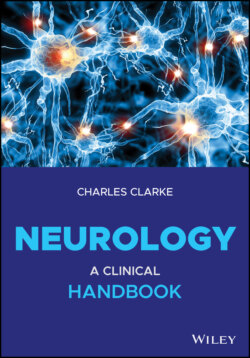Читать книгу Neurology - Charles H. Clarke - Страница 31
ABC of Movement: Cortical, Extrapyramidal and Cerebellar Function
ОглавлениеMovement – skilled, coordinated and fast – is highly developed in mammals. Rudimentary objectives are feeding, survival and reproduction and in Mankind, skilled use of tools, weapons and instruments of creative art.
1 Corticospinal (pyramidal) tracts originate in the motor cortex, somatosensory and limbic areas to reach cranial nerve nuclei and cord anterior horn cells. Dysfunction produces loss of skilled movement, weakness, spasticity and reflex change. Pyramidal describes the triangular cross‐section of the tract in the medulla. Pyramidal is used here interchangeably with corticospinal.
2 The striatal (a.k.a. extrapyramidal) system facilitates fast, fluid movement. Hallmarks of dysfunction are slowness (bradykinesia), stiffness (rigidity), rest tremor, all seen typically in Parkinson’s and some movement disorders. Broadly, these are basal ganglia functions.
3 The cerebellum coordinates smooth movement, and balance. Ataxia and action tremor are features of dysfunction.
Figure 2.1 Brain: overall anatomy (a) Lateral view (b) Midsagittal section (c) Ventral view.
Source: Champney (2016).
